
2020-02-26 10:30:00
GLOBAL ENERGY DEMAND +20%: 2040
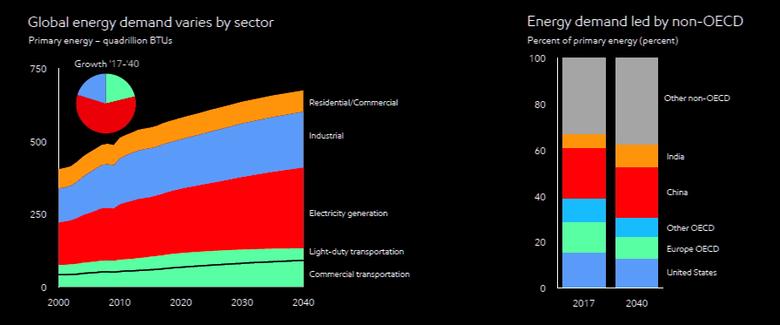
EXXONMOBIL - Outlook for Energy: A perspective to 2040
KEY TAKEAWAYS OF 2040 PROJECTIONS
- Energy is fundamental for modern life
- Access to modern energy is intrinsically linked with improvements in quality of life. Over the next few decades, increasing populations and rising prosperity will increase demand for homes, businesses and transportation - and the energy that powers them.
- Global energy demand rises by 20 percent; market demand trends differ for OECD and non-OECD
- Continued innovation will help OECD economies expand while reducing their energy demand by about 5 percent and energy-related CO2 emissions by nearly 25 percent. In the non-OECD countries however, energy use and emissions will rise along with population growth, increased access to modern energy and improving living standards.
- Global electricity demand rises 60 percent
- The trend to further electrify buildings, factories, cars and buses, along with smart appliances and greater automation, spurs the need for
- more electricity everywhere. Solar, wind and natural gas contribute the most to meeting growth in electricity demand.
- Almost half of the world’s energy is dedicated to industrial activity
- New homes and roads will be constructed and household appliances produced as a result of rising population and urbanization. Steel,
- cement and chemicals are essential materials to satisfy these needs which, today, are energy-intensive products.
- Commerce and trade drive transportation energy consumption up more than 25 percent
- Increased on-road efficiency and more electric vehicles will lead to a decline in light-duty vehicle liquid fuel demand. Overall transportation fuel demand growth is driven by increased commercial activity - moving more people and products by bus, rail, plane, truck and marine vessel. Energy-dense, affordable and widely available oil will remain the predominant transportation fuel.
- Global energy-related CO2 emissions peak, but remain above assessed 2oC scenarios
- Increased energy efficiency and a shift to lower carbon energy sources will help curb CO2 emissions, but not sufficiently to reach a 2oC pathway. Innovative technology solutions and supportive policies are still needed to achieve society’s emissions aspirations.
- Oil and natural gas remain important energy sources and require significant investment
- Oil and natural gas make up about 55 percent of global energy use today. By 2040, 10 of the 13 assessed 2oC scenarios project that oil and gas will continue to supply more than 50 percent of global energy. Investment in oil and natural gas is required to replace natural decline from existing production and to meet future demand under all assessed 2oC scenarios.
DEMAND — PROJECTIONS
- Global demand reaches 675 quadrillion BTUs in 2040, up ~20 percent versus 2017, reflecting a growing population and rising prosperity
- Residential and commercial energy demand is flat out to 2040 as efficiency improvements offset the energy needs of a growing population
- Electricity generation is the largest and fastest-growing sector, primarily reflecting expanding access to reliable electricity in developing countries
- Industrial sector growth supports construction of buildings and infrastructure, and manufacturing of a variety of products to meet the needs of the world's population
- Commercial transportation grows with expanding economies, which increase the movement of goods. Personal mobility also expands, but efficiency improvements and more electric vehicles offset the increase in vehicle miles traveled
- Global energy consumption continues to shift proportionally to developing economies where population and economic growth are both faster than the global average. Non-OECD share of global energy demand reaches ~70 percent in 2040
- China and India contribute ~50 percent of the world's energy demand growth to 2040
- Efficiency gains outpace economic growth in the OECD, which helps offset energy demand increases historically linked to economic expansion
- The combined share of energy used in the United States and European OECD nations declines from about 30 percent in 2017 to less than 25 percent in 2040
- Oil continues to play a leading role in the world’s energy mix, with growing demand driven by commercial transportation and feedstocks for the chemicals industry
- Natural gas grows the most of any energy type, reaching a quarter of all demand
- Renewables and nuclear see strong growth, contributing more than 40 percent of incremental energy supplies to meet demand growth
- Coal use remains significant in parts of the developing world, but drops below 20 percent global share as China and OECD nations transition toward lower-carbon sources like renewables, nuclear and natural gas
- Electricity, an energy carrier and not an energy source, grows ~3X faster than overall energy demand
-----
Earlier:
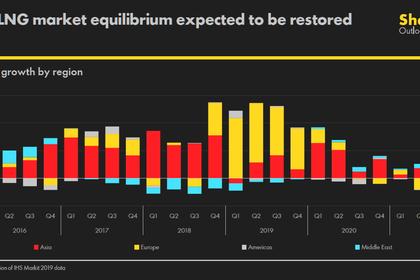
2020, February, 21, 12:20:00
GLOBAL LNG MARKET UP 12.5%
Global demand for liquefied natural gas (LNG) grew by 12.5% to 359 million tonnes in 2019, according to Shell’s latest annual LNG Outlook published today – a significant increase that bolsters LNG’s growing role in the transition to a lower-carbon energy system.
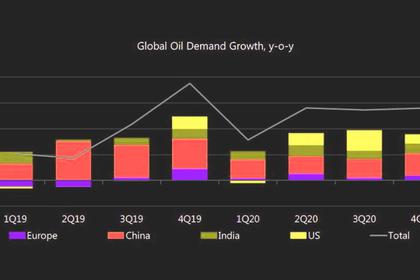
2020, February, 19, 11:55:00
GLOBAL OIL DEMAND 2020: 100.73 MBD
Oil demand growth in 2020 is revised down by 0.23 mb/d from the previous month’s assessment. With this, global oil demand is now forecast to grow by 0.99 mb/d and average 100.73 mb/d for 2020,
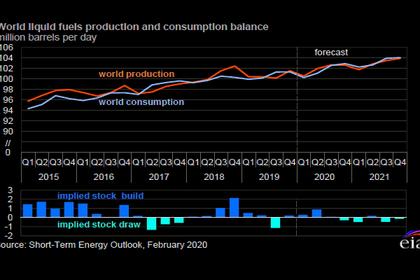
2020, February, 19, 11:50:00
GLOBAL PETROLEUM DEMAND WILL UP BY 1.0 MBD
EIA now expects global petroleum and liquid fuels demand will rise by 1.0 million b/d in 2020, which is lower than the forecast increase in the January STEO of 1.3 million b/d in 2020, and by 1.5 million b/d in 2021.
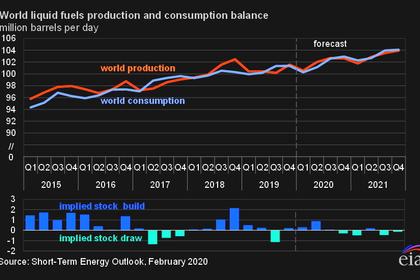
2020, February, 12, 12:12:00
OIL PRICES 2020-21: $61-68
EIA forecasts Brent prices will average $61/b in 2020; with prices averaging $58/b during the first half of the year and $64/b during the second half of the year. EIA forecasts the average Brent prices will rise to an average of $68/b in 2021.
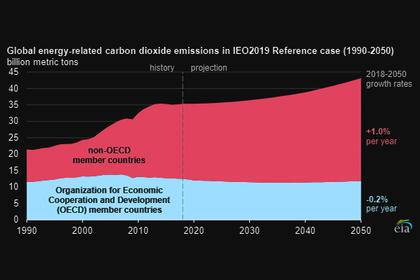
2020, January, 29, 12:55:00
GLOBAL EMISSIONS MARKET: $214 BLN
The European Commission’s “green deal” policy package, which was announced in December, will commit the European Union to achieve climate neutrality, emitting no more greenhouse gases beyond what can be absorbed, by 2050.
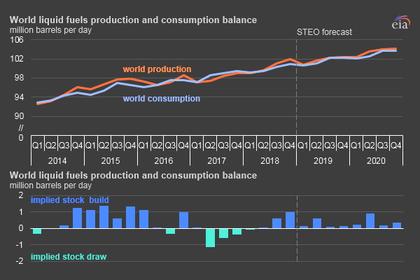
2020, January, 24, 13:40:00
GLOBAL OIL DEMAND 2020: 100.98 MBD
For 2020, oil demand growth is revised up by 0.14 mb/d from the previous month’s assessment and is forecast at 1.22 mb/d, mainly reflecting an improved economic outlook for 2020. As a result, total world oil demand is projected to rise from 99.77 mb/d in 2019 to 100.98 mb/d in 2020.
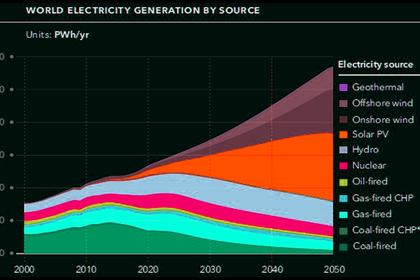
2020, January, 24, 13:10:00
GLOBAL RENEWABLE ELECTRICITY UP 20%
global electric power generation from renewable sources will increase more than 20% throughout the projection period (2018–2050), providing almost half of the world’s electricity generation in 2050. In that same period, global coal-fired generation will decrease 13%, representing only 22% of the generation mix in 2050.











